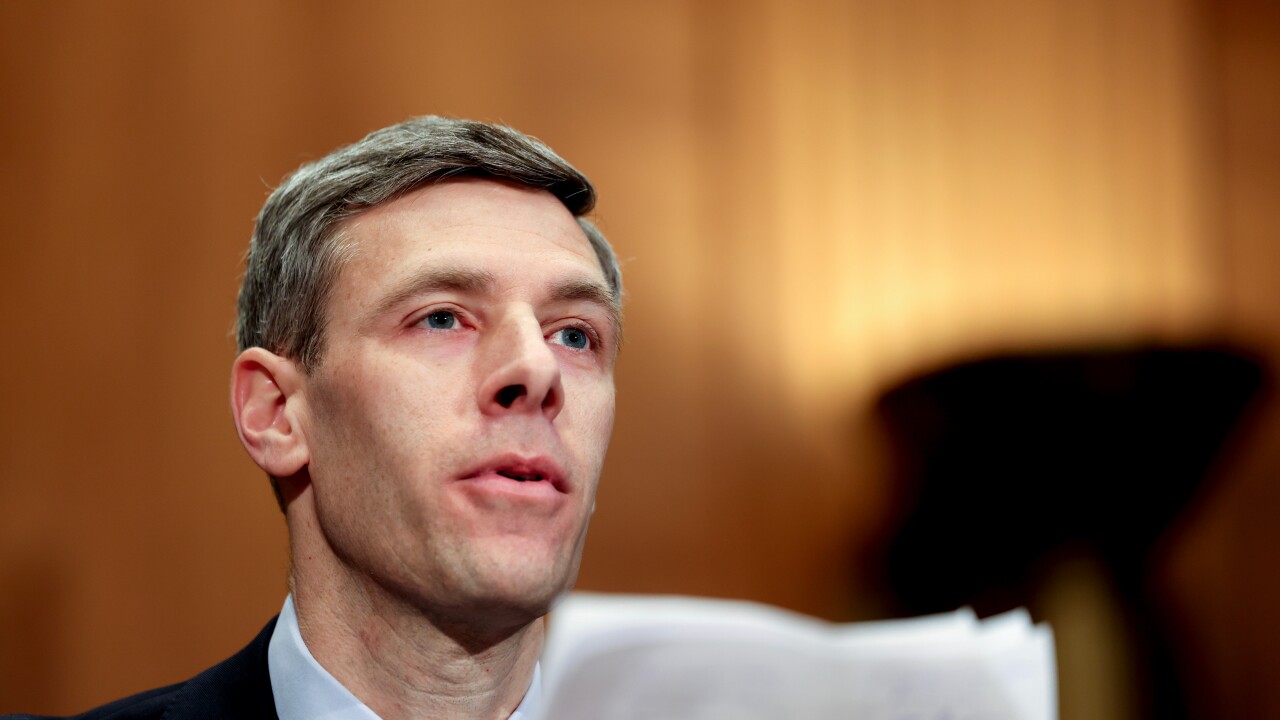With the second quarter two-thirds complete, bank executives are in a hurry-up-and-wait mode.
They need economic growth to accelerate, and many indicators suggest that it is poised to happen. But the timing is unclear, especially with prospects dimming for fire starters like regulatory reform and tax cuts.
What banks need to do in the meantime is keep cutting costs, mine niche markets such as credits cards and (gasp) auto lending, and hope that rising delinquency rates on consumer loans remain at reasonable levels, executives at two industry conferences said this week.

JPMorgan Chase expects a “solid, not stellar” second quarter as it and others continue to wait for more interest rate hikes to help credit-related profit margins, Chief Financial Officer Marianne Lake said Wednesday at the Deutsche Bank Global Financial Services Conference. Until then, JPMorgan will concentrate on growth in its credit card and mortgage businesses this year, she said.
“Consumers are in very good shape, their balance sheets are repaired, they’re pretty liquid,” Lake said.
Those positive signs, however, have not yet been turned into the profit levels that bankers seek.
“People are feeling pretty good, their businesses are doing well, they are in a highly productive state, they have a strong balance sheet,” U.S. Bancorp CEO Andy Cecere said on Tuesday at the Deutsche Bank conference. “The fact is, though, a lot of those beliefs haven't shown themselves to actually be in action yet. There is a little bit of a wait-and-see occurring.”

Signs emerged in the first quarter that
“None of us benefit from an overleveraged consumer, and none of us benefit from capricious behavior,” Mark Graf, the CFO at Discover, said at the Deutsche Bank conference.
Nevertheless, consumer delinquency rates were bound to increase because they had been so low for so long, Graf said. Wells Fargo’s CFO, John Shrewsberry, also downplayed concerns about consumer loan-loss rates.
“There has been a normalization of chargeoffs in consumer, but it’s not in a bad place,” Shrewsberry said at the Deutsche Bank conference.
Indeed, Capital One is looking to expand auto lending, as used-car prices fell further than expected in the first quarter, CFO Scott Blackley said on Tuesday at the Deutsche Bank conference. Other banks have taken steps to reduce auto exposure as credit quality trends have waned, but Blackley expressed confidence in Capital One's approach.
“We still think we're able to book some very resilient and profitable business,” Blackley said. “We’re more likely to focus on price and margin over volumes as we work our way through 2017.”

Amid weaker-than-preferred loan demand and potential consumer-loan problems, bankers have relied on their most trusted tool—expense cuts. Bank of America will record a $300 million charge in the second quarter to
Things are not becoming any clearer on the regulatory front. Optimism for tax and regulatory reform has cooled somewhat among bankers and their clients as the tough realities in Washington have yet to live up to rhetoric.
“Frankly, the companies may have gotten ahead of themselves in terms of some of the optimism out of the election, but the reality is that the economy has been performing fairly consistently below that,” Bank of America Chairman and CEO Brian Moynihan said on Wednesday at the Sanford C. Bernstein & Co. Strategic Decisions Conference.
Still, JPMorgan is hopeful for some relief on capital requirements and stress testing, Lake said. She also alluded to “key open roles” that the Trump administration has not filled, which could have an additional impact outside of legislative changes.
Lake did not specify which jobs she meant, but the Trump administration in the coming months could have opportunities to fill vacancies on the Federal Reserve Board, name new heads of the Office of the Comptroller of the Currency and Federal Deposit Insurance Corp. and appoint some midlevel Treasury Department officials.
“Nothing has actually changed,” she said. “And so when we come into work every day right now, we still need to work very hard to comply with the rules as they currently stand.”
So, as the bankers who spoke on Wednesday were asked by analysts about their second-quarter performance, none were able to muster much excitement. Commercial-and-industrial lending at Wells Fargo was “pretty soft” in the first quarter, and “the second quarter is about the same, I think,” Shrewsberry said.
“From taxes to trade to energy and especially health care, as a result of no real forward momentum on any of those fronts and frankly more of a sense of paralysis,” Shrewsberry said, “my sense is that people are waiting and seeing and confidence is lower that these signature policies are going to come through.”
Thus, there’s not much else that Moynihan or other bank leaders can do in the short run.
“If you travel around the world and talk to clients and customers … everyone wants the economies, especially in Europe and America, to grow faster because if they did, life would be easier,” Moynihan said.





